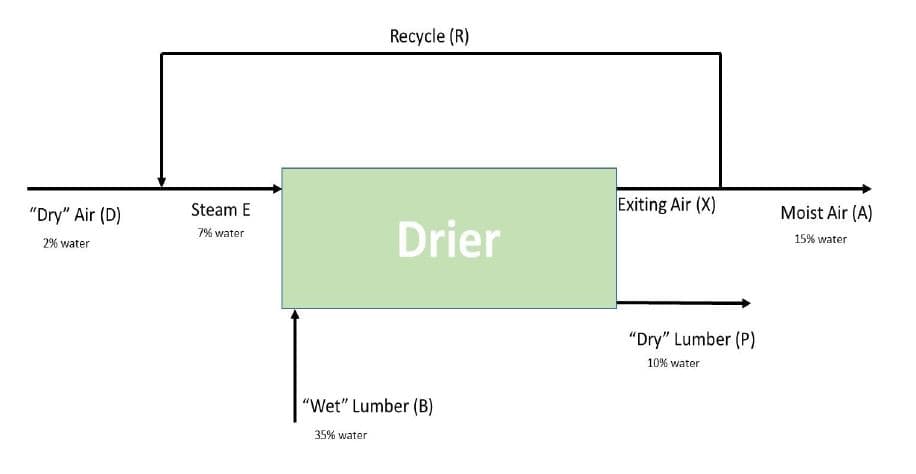Freshly cut lumber is dried to reduce its weight, increase its strength, and to prevent decay. In an industrial process "wet" lumber, which is 35% by weight water, is dried to 10% by weight water. To dry the lumber low-moisture air is blown across the lumber, this air absorbs some of the water in the lumber. The available air- labeled "dry" air in the diagram below - is 2% by weight water; this air has so little water that, when used to dry the wood, it warps and cracks the lumber. To produce air of the correct moisture (7% by weight water) some of the air exiting the process is recycled. The known stream concentrations are labeled on the diagram below. In addition, 1.82 lbs of "dry" air enter for every 1 lb of "wet" lumber entering the process. Using 100 lbs of wet lumber as the basis, what fraction of moist air leaving the drier (Stream X) is recycled; that is, what is the value of R/X (that is lbs of R/lbs X)?
Freshly cut lumber is dried to reduce its weight, increase its strength, and
to prevent decay. In an industrial process "wet" lumber, which is 35% by weight water, is dried to 10% by weight water. To dry the lumber low-moisture air is blown across the lumber, this air absorbs some of the water in the lumber. The available air- labeled "dry" air in the diagram
below - is 2% by weight water; this air has so little water that, when used to dry the wood, it warps and cracks the lumber. To produce air of the correct moisture (7% by weight water) some of the air exiting the process is recycled. The known stream concentrations are labeled on the
diagram below. In addition, 1.82 lbs of "dry" air enter for every 1 lb of "wet" lumber entering the process. Using 100 lbs of wet lumber as the basis, what fraction of moist air leaving the drier (Stream X) is recycled; that is, what is the value of R/X (that is lbs of R/lbs X)?

Trending now
This is a popular solution!
Step by step
Solved in 5 steps









